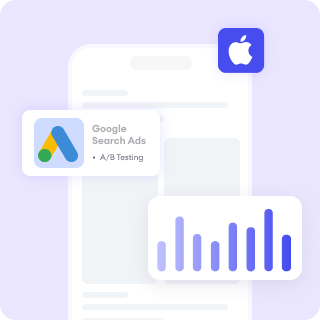A responsive website is a website designed to adapt and display optimally across a wide range of devices and screen sizes. This means the website automatically adjusts its layout, images, and content based on the size and resolution of the user's screen, whether they're using a desktop computer, tablet, or smartphone.
However, having a responsive website isn’t just a “nice-to-have” but it’s actually a must for your SEO. This is because Google prioritizes mobile-friendly sites in search rankings, and users expect seamless performance no matter what device they’re using.
A poorly optimized site could mean lost traffic, lower rankings, and frustrated users.
So how do you ensure your website is responsive and performs well across all devices while staying SEO-friendly?
Let’s find out how to check if your website is responsive and SEO-friendly across devices with our simple guide here.
1. Use Lighthouse Tool
Google provides a free tool to check if your site meets its mobile-friendly criteria, which is Lighthouse. Here's how to use Lighthouse:
Run a Lighthouse Audit
- Open your site in Google Chrome.
- Right-click and select Inspect, then go to the Lighthouse
- Choose Mobile as the device type and click Generate Report.
Review the Results
- Mobile Usability: Detects issues like small text, close touch targets, and improper viewports.
- SEO: Checks for missing meta tags and mobile-friendly factors.
- Performance: Highlights loading speed and visual stability.
Fix Issues and Re-Test
- Follow Lighthouse's suggestions (e.g., adjust text size, improve spacing, or optimize images).
- Re-run the audit to confirm improvements.
Learn more: https://developer.chrome.com/docs/lighthouse/overview/?visit_id=638720866394207709-2679481619&rd=2
2. Check Your Site’s Responsiveness Manually
Open your website on a variety of devices such as smartphones, tablets, laptops, and desktops. If you don’t have access to multiple devices, use your browser’s developer tools.
- On Chrome: Right-click anywhere on the page, select “Inspect,” then click the “Toggle Device Toolbar” (icon of a phone and tablet).
- Simulate different screen sizes and resolutions. Look for layout shifts, cut-off content, or images that don’t resize correctly.
SEO Impact: Poor responsiveness can lead to high bounce rates, which signals to search engines that your site isn’t user-friendly.
3. Evaluate Page Load Speed
Responsiveness isn’t just about design—it’s also about performance. A responsive site should load quickly on all devices.
Use tools like:
- Google PageSpeed Insights: Get performance scores for mobile and desktop, along with actionable recommendations.
- GTmetrix or WebPageTest: These provide in-depth reports on load times, server response, and resource optimization.
SEO Impact: Slow-loading sites are penalized in rankings. Even a one-second delay can drastically increase bounce rates and reduce conversions.
4. Test for Core Web Vitals
Google’s Core Web Vitals metrics focus on user experience, which directly ties into SEO. These include:
- Largest Contentful Paint (LCP): How quickly your main content loads.
- First Input Delay (FID): How soon users can interact with the page.
- Cumulative Layout Shift (CLS): How stable the visual layout is.
Run a Core Web Vitals report through PageSpeed Insights or Google Search Console to identify issues. Core Web Vitals are part of Google’s ranking algorithm, making them essential for SEO success.
Learn more: What Happens If Core Web Vitals (CWV) Are Not Optimized?
Learn more: How To Evaluate Your Core Web Vitals (CWV) Health
5. Analyze Navigation and Interactivity
Responsive sites should offer intuitive navigation and functionality on every device. You should test:
- Menu functionality: Do dropdowns and buttons work smoothly on mobile?
- Touch-friendly elements: Are links and buttons large enough for users to tap without accidental clicks?
- Forms: Are forms easy to fill out on smaller screens?
Poor navigation may frustrate users, leading to higher bounce rates and lower dwell times, which can hurt your rankings.
6. Optimize Images and Media
High-quality visuals enhance your site’s appeal, but oversized images can slow it down. An optimized media can help to improves load times, enhancing user experience and SEO performance.
So make sure that:
- Images are compressed and served in modern formats like WebP.
- Videos are responsive, scaling correctly on different devices.
- Media doesn’t block or delay the loading of other critical content.
7. Check Structured Data Implementation
Structured data, like schema markup, helps search engines understand your content better. Use tools like Google’s Structured Data Testing Tool to ensure your markup works across devices. Keep in mind that structured data can improve search visibility with rich results, but it needs to function properly on mobile and desktop alike.
8. Monitor Performance with Analytics
Use tools like Google Analytics or heatmaps to track how users interact with your site across devices. Identifying and addressing problem areas can boost engagement and rankings.
Try your best to identify underlying issues by looking at metrics such as:
- Bounce rate differences between mobile and desktop.
- Average session duration.
- Pages with high exit rates on mobile.
Final Thoughts
A responsive and SEO-friendly site is the key to attracting and retaining users in a mobile-first world. Regular testing and optimization not only improve user experience but also help secure higher search rankings.
Keep in mind that Google rewards sites that prioritize the user. So make sure to invest in the responsiveness and performance of your sites, and both your visitors and your search rankings will thank you!
Improve your website performance with FoxAdvert!
If you are looking forward to improving your website performance, our professional team of SEO experts at FoxAdvert can help you. Contact us today to start your journey 😊











